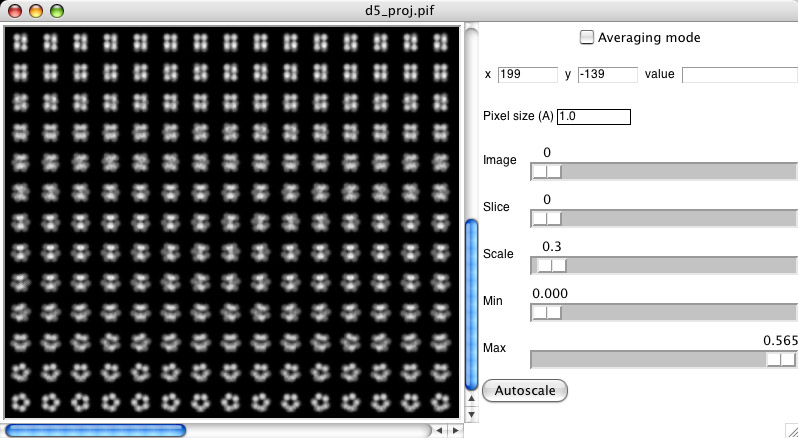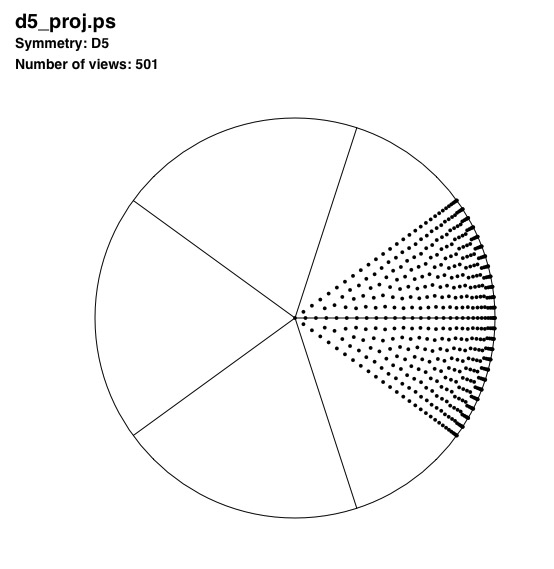Calculating a synthetic image
Source of data
Reference maps for single particle analysis can be derived from three sources:
- Atomic structures (from X-ray crystallography, electron microscopy or NMR).
- Electron microscopic reconstructions.
- Artificial shapes.
The closer the resemblance of reference projections to the actual particle images, the easier the processing. Whatever the source of the reference map, it must have the same scale and dimensions as the particle. The reference map must be a cube with each edge the same length as the edge of a picked particle image.
Calculating maps from atomic coordinates
Real space
Maps can be calculated from atomic structures using either a real space approach or a reciprocal space approach. The real space calculation simply places gaussian spheres for each atom. The resolution is determined by the decay constant (sigma):
bgex -verbose 7 -size 100,100,100 -origin 50,50,50 -sampling 1.5 -resolution 10 -coordinates input.pdb output.map
Note though that the resolution parameter may not correspond to its typical meaning: i.e., that the structure factors at higher resolution are mainly noise or absent. The placement of the gaussian spheres results in good phases, but the amplitudes are suppressed at high resolution, giving the map a smooth appearance. This can be improved by increasing the high frequency amplitudes.
Reciprocal space
In reciprocal space, the atomic potential (or structure factors) is calculated using electron scattering curves and backtransformed to real space (using the -realspace option):
bsf -verbose 7 -size 100,100,100 -origin 50,50,50 -sampling 1.5 -resolution 10 -realspace -coordinates input.pdb output.map
In each case, the origin of the coordinates is placed in the image at the origin specified by the -origin option (given in voxel units).
Generating an artificial map
A simple artificial map can be easily calculated using some primitive shapes and applying the desired symmetry:
beditimg -v 7 -create 100,100,100 -origin 50,50,50 -sphere 35,35,38,12 -edge 3 -fill 1 spot1.map
beditimg -v 7 -sphere 21,40,38,2 -edge 1 -fill 1 spot1.map spot2.map
bsym -verb 7 -sym D5 spot2.map d5.map

Isosurfaced at a threshold of 2.2 sigma.
Map orientation
If a map has symmetry and this will be used in further processing, it has to be oriented correctly according to the conventions adopted in Bsoft.
Generating projections
To generate projections in the asymmetric unit:
bproject -verbose 7 -symmetry D5 -angles 3 -Postscript d5_proj.ps d5.map d5_proj.pif

The postscript file contains a plot of the distribution of views generated:
